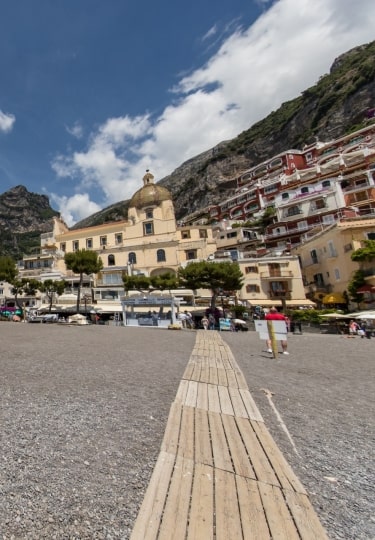The Amalfi Coast’s towns are some of the most charming in Italy. Arranged amid the vertical topography and Mediterranean verdancy of the glamorous Sorrentine Peninsula, the Amalfi Coast would elevate even the most mundane of urban planning.
Fortunately, this is Italy, a place where design panache is a given. The towns of the Amalfi Coast—in a similar way to those of the northerly Cinque Terre—are truly gorgeous to look at.
They’re often brightly colorful, with staircases of architecture that scramble up the steep hills, while majolica-clad bell towers and medieval watchtowers crown the coast. Explore their winding streets, discover their traditional crafts that go back centuries, and ascend the trails for spellbinding views.
Here’s a selection of the most charming of the Amalfi Coast’s towns.
Positano
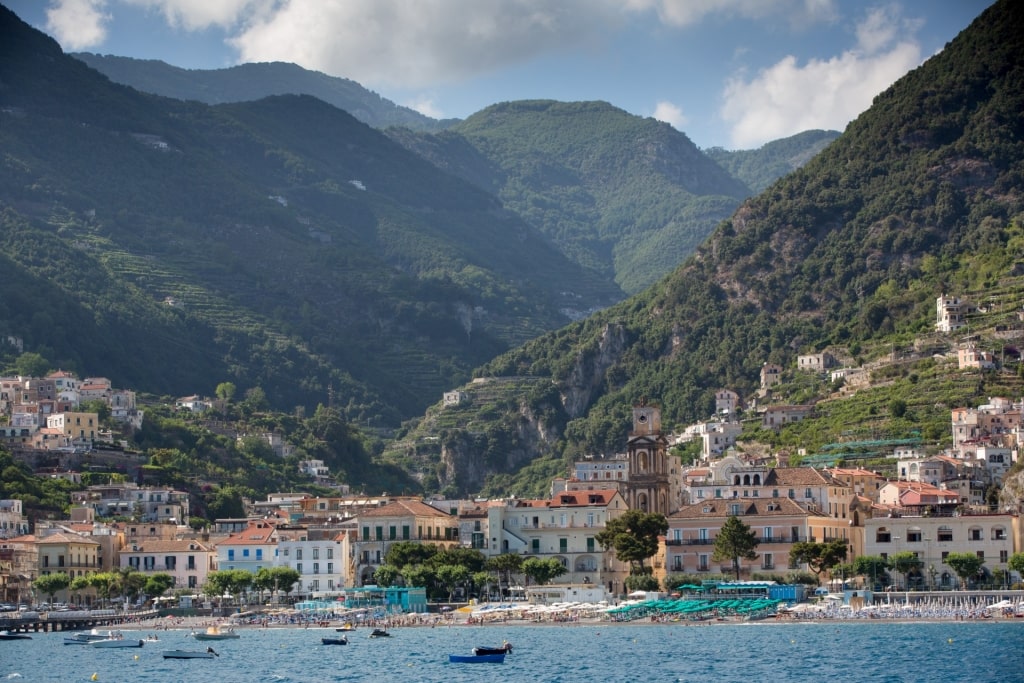
Positano
Positano is the epitome of the Amalfi Coast’s charms. As such, it’s also one of the most popular stops along the coastal highway. Its cascading architecture, shimmering shallows, and perfect al fresco cocktail spots ensure its evergreen popularity.
Its swathe of lounger-bedecked shingle beach is one of the major catwalks of Italy’s summer season. Yachts moor just offshore, while the sun flares off of Gucci glasses and tanned couples relax beneath the tangerine parasols while beach clubs amp up the party vibe with dance music.
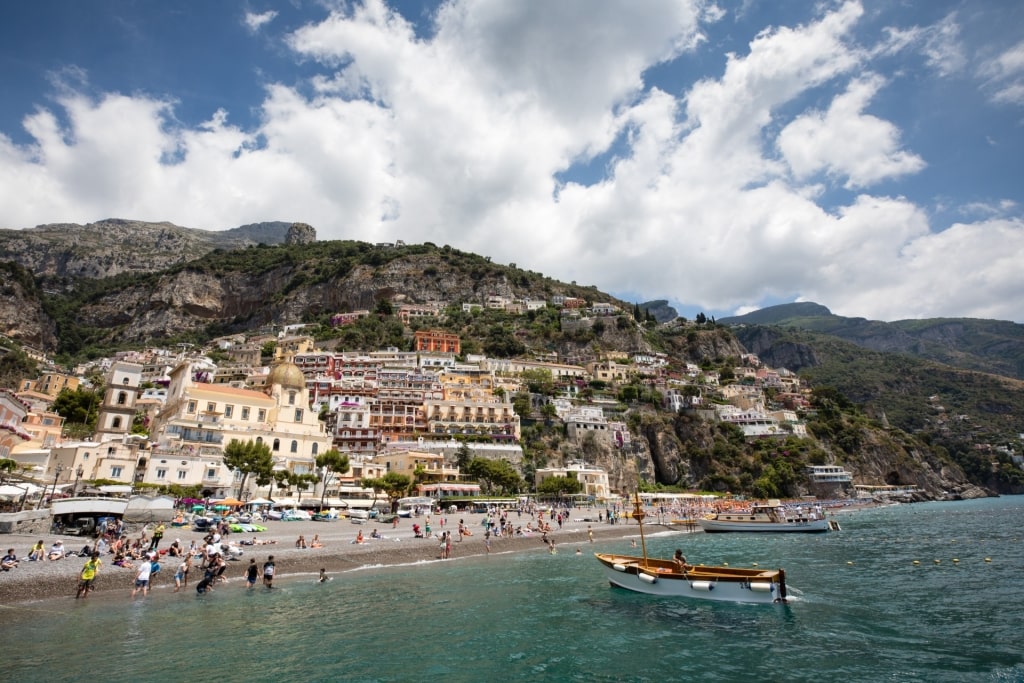
Positano
You can dial down the fabulousness by disappearing into the cat’s cradle of lanes and stairways that climb among the rainbow buildings.
One of the best things to do in Positano is to browse the shops and have yourself fitted for the wonderfully comfortable leather sandals that are a tradition here. Beneath cumuli of fragrant wisteria, find a table outside a café while you wait for your sandals to be finished.
Collect your new footwear and break them in on a trail leading up into the hills. Or show them off at the beach at elegant Restaurant L’Incanto, as the dance beats diminish and only the alluring duet of the Italian language and the sea can be heard.
Amalfi
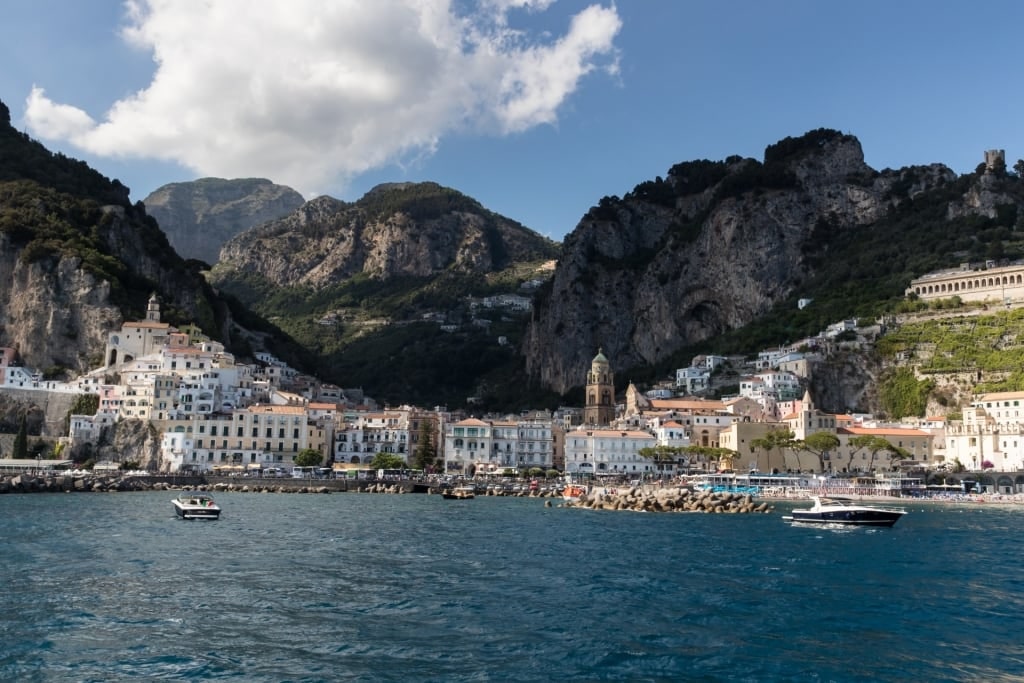
Amalfi
The namesake town of this glamorous coastline in Southern Italy, Amalfi is larger than most of the other towns and villages in this list.
Its superior size is catered for by the fan-shaped valley in which it sits. In this stunning situation nestle Amalfi’s whitewashed houses and impressive cathedral, and medieval ghosts.
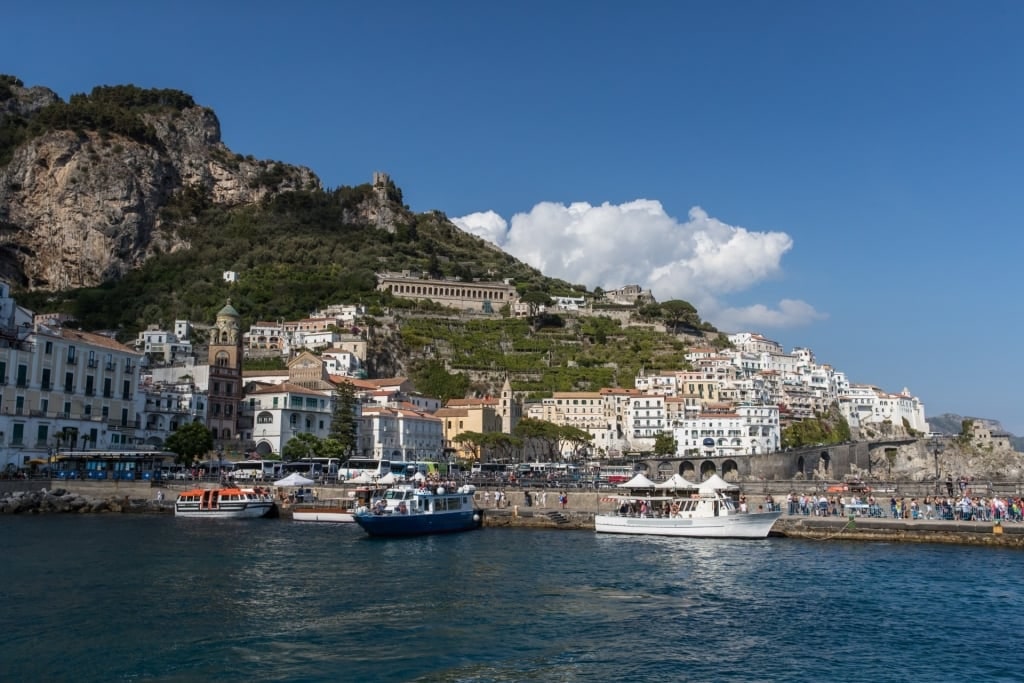
Amalfi
A former maritime republic that reigned supreme in the region for several centuries, Amalfi and its heritage began to attract visitors in the 19th century.
The English Romantic Poets and European upper class, on their Grand Tours, would have shaded together beneath the town’s historic porticoes from the warm Italian sun.
Their main points of interest would have been the distinctly gothic Torre Saracena that overlooks the bay, as well as the ninth-century Duomo.
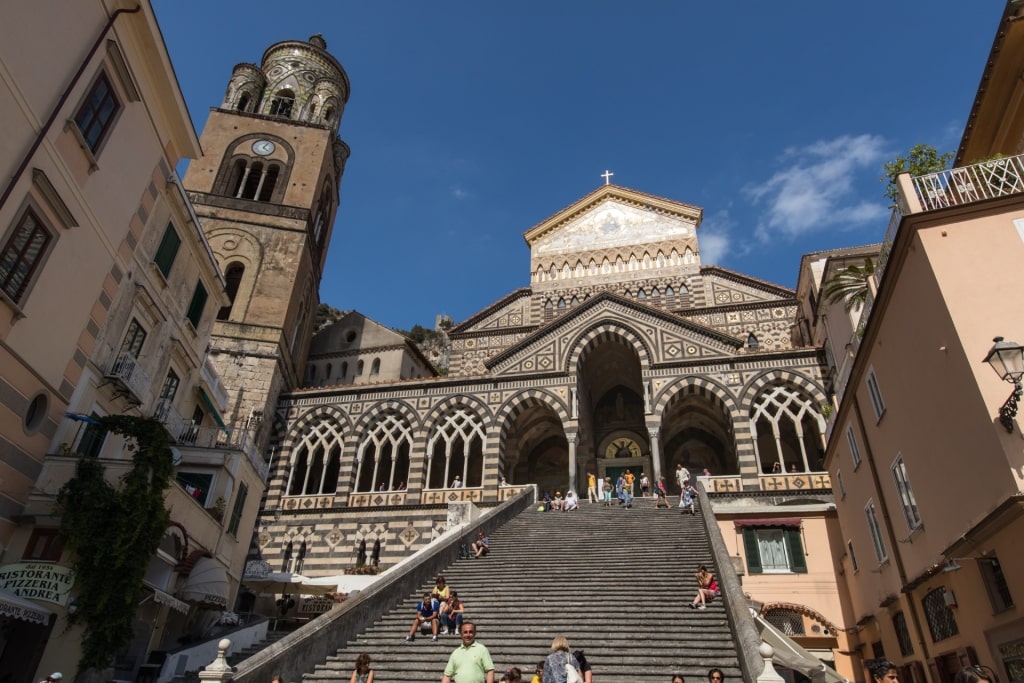
Duomo, Amalfi
The cathedral, one of the most significant cultural treasures among the Amalfi Coast’s towns, offers today—as it did for the Victorians—a striking baroque interior, majolica-faced bell tower, and transportive sense of awe.
Maiori
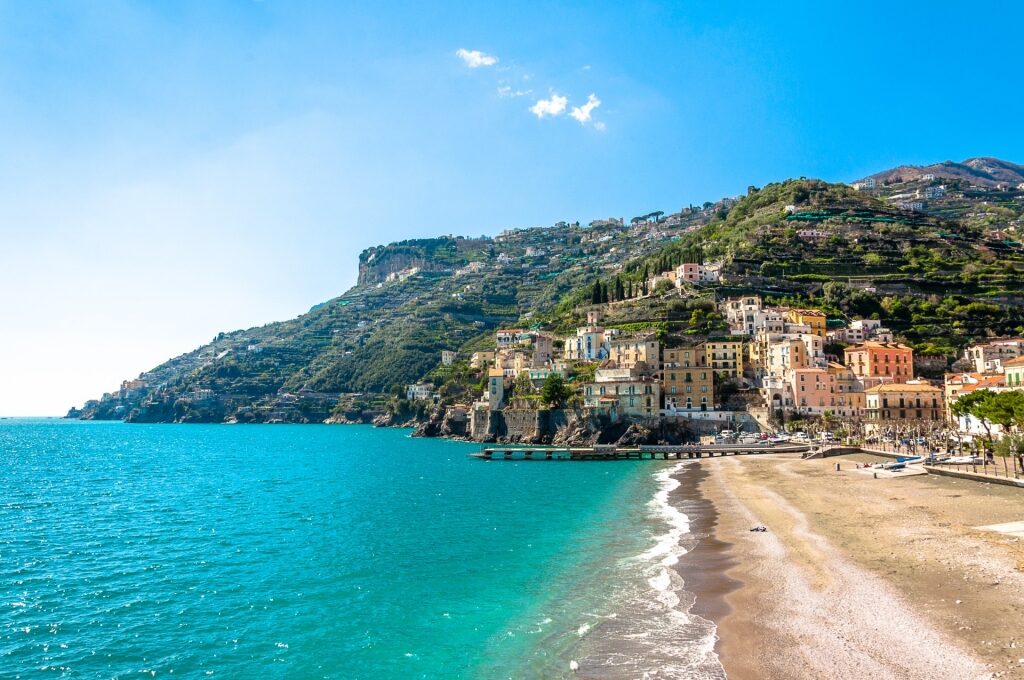
Maiori
Maiori was raised in the national consciousness by director Roberto Rossellini, for whom this seaside town’s atmospheric tangle of streets was something of a muse.
Besides the gaggle of Rossellini devotees dressed in cineaste black even in the height of summer, most find their way to Maiori, first and foremost, for its beach. The longest stretch of sand on the Amalfi Coast, it’s a favorite among families as there are acres of space for all to enjoy.
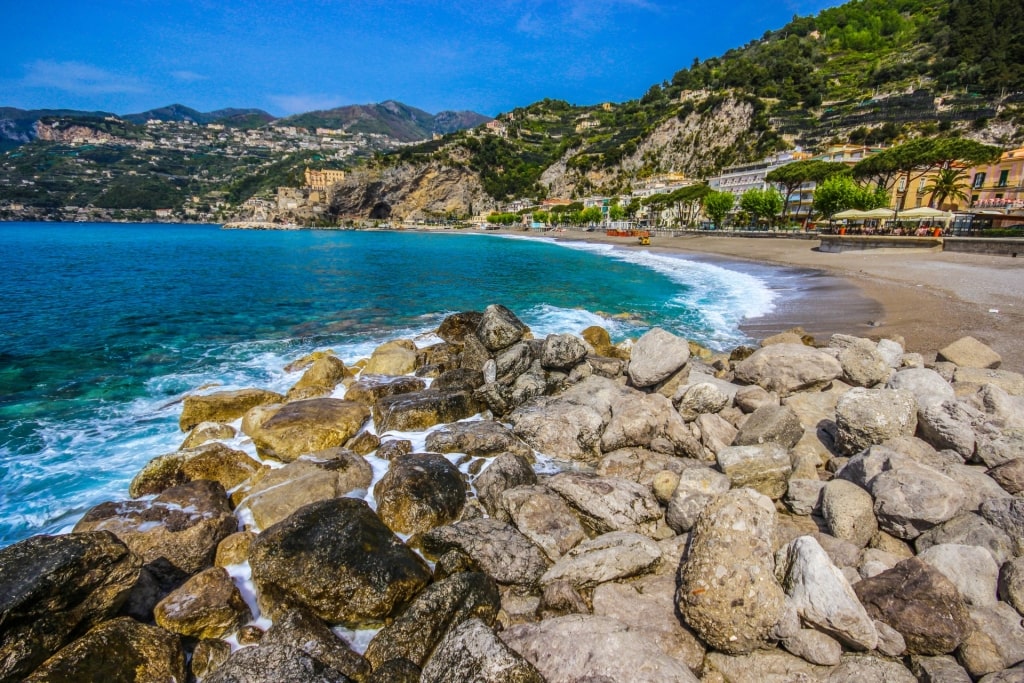
Maiori Beach
Curiously, this Amalfi Coast beach is only around 70 years old—the result of a landslide that devastated and then transformed Maiori’s seafront.
It’s hard to believe while catching the summer breezes on its waterfront promenade, where the scene of the gelato sellers, beachwear boutiques, and sea-view restaurants seem as permanent as the hills.
Wander Mairoi’s colorful backstreets and get a spectacular view over the coast from the 11th-century Castle of San Nicola on a hill above the town. And be sure to book a table well in advance at the Norman Tower overlooking the beach for a truly special meal.
Minori
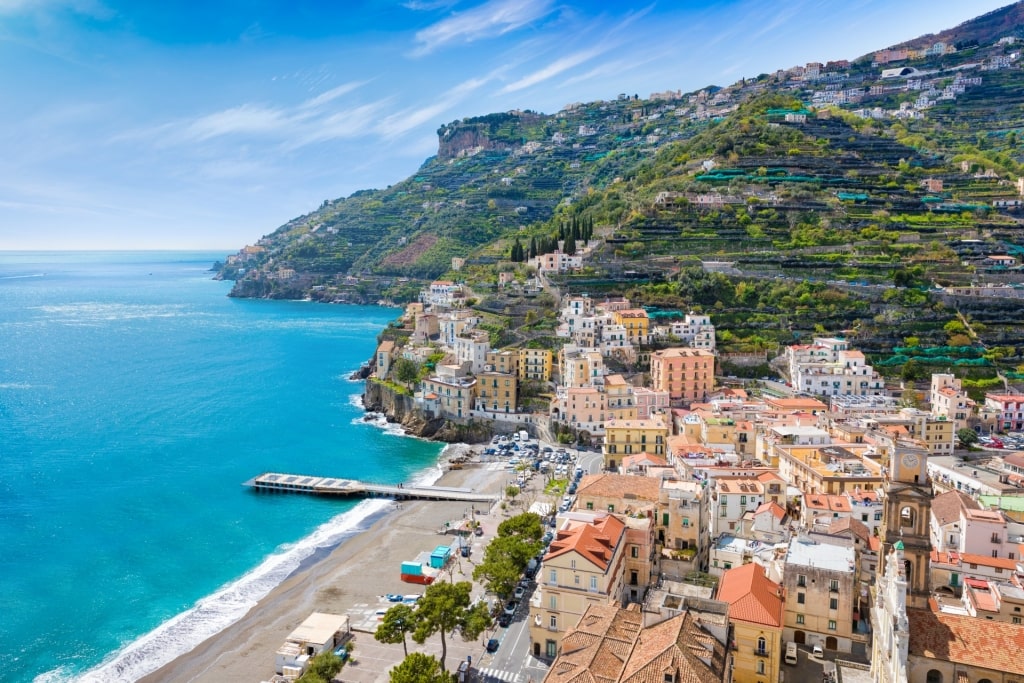
Minori
Forever condemned to be the little brother to its neighbor Maiori, Minori is not simply a slightly smaller version of Mairoi but is in fact an authentic Amalfi Coast town with enough charm for a destination twice its size.

Scialatielli
And while its south-facing beach is certainly smaller than Maiori’s, the town also comes with an outsized reputation for the food that Italy is known for.
This has its origins in the 18th century when Minori was known for its pasta factories. Historically, its local scialatielli variety of pasta—similar to tagliatelle—would be dried in the piazza.
The trattorias with their puffed-out awnings, slotted in among the town’s enchanting warren of pastel-colored multi-story homes, still uphold Minori’s reputation for good food.
It’s the presence of Sal de Riso’s shop/bistro, however, that really draws the gourmet travelers who come to sample the wares of perhaps Italy’s most famous pastry chef.
A must while visiting is to try his take on the Minoriesi’s torta ricotta e pere—a creamy, nutty sponge cake made with pears.
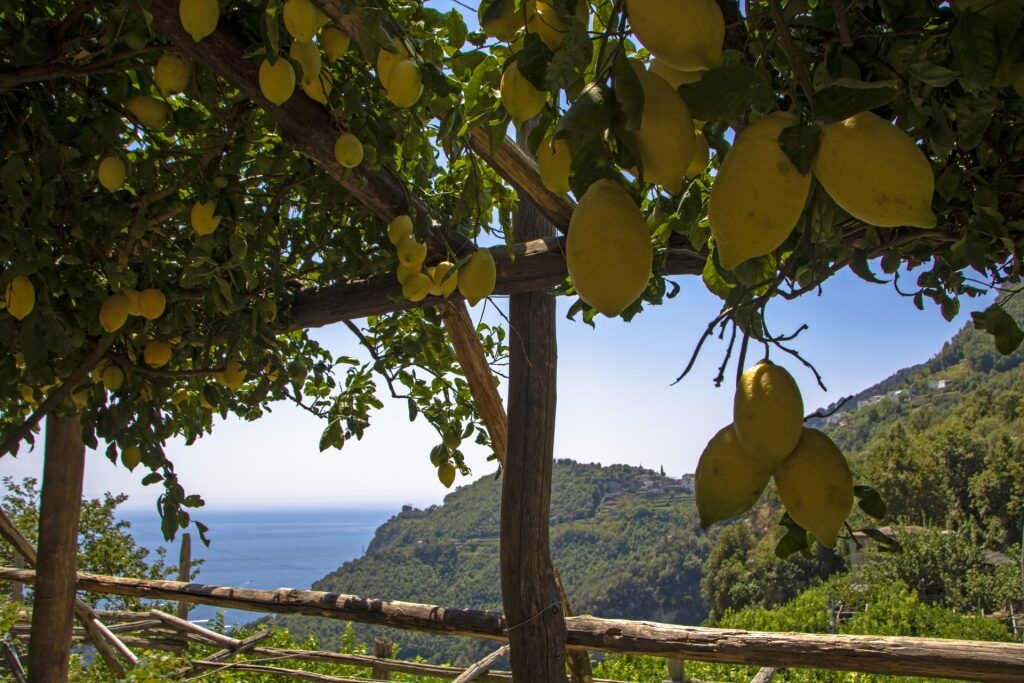
Il Sentiero dei Limoni
You can walk to Maiori from Minori in about an hour on the particularly fragrant Il Sentiero dei Limoni (Path of Lemons). This paved route, passing through the hamlet of Torre, crosses a citrus-growing hub that’s been a feature of the Amalfi since the 1600s.
In the summertime, you’ll pass mules loaded down with fragrant cases of sunshine-yellow fruit.
Ravello
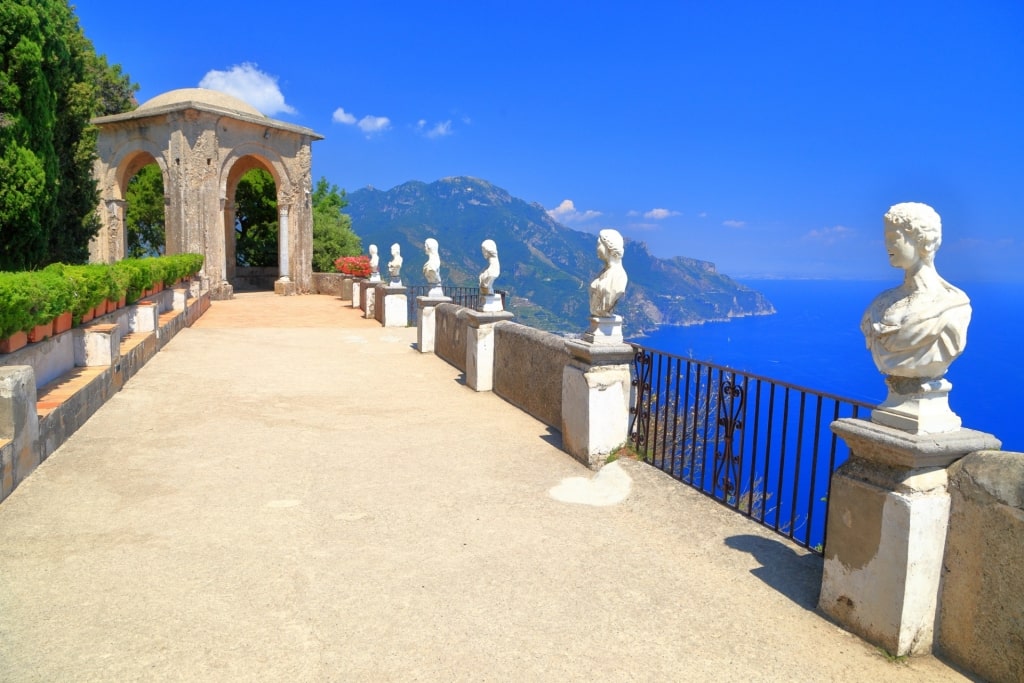
Villa Cimbrone, Ravello
High in the upper reaches of the Lattari Mountains, Ravello offers such dazzling views of the coast that you might have difficulty dragging your gaze back to the actual town.
Of course, the architecture of this lofty Amalfi gem only enhances the views, especially those viewed from the Villa Cimbrone.
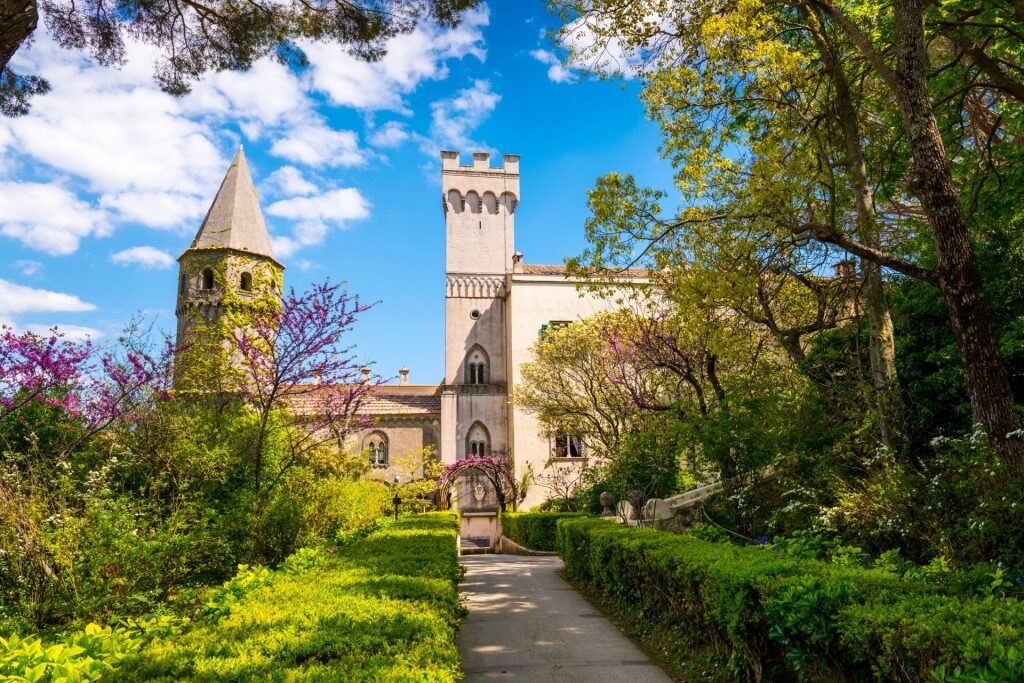
Villa Cimbrone, Ravello
One of the most exclusive of the Amalfi Coast’s towns, Ravello is a maze of impressive villas, some decaying elegantly while others have been restored to their pomp.
The Villa Cimbrone belongs to the latter group. Today, it’s no longer a private residence but a five-star luxury hotel with a history that reaches back to the 11th century.
However, you don’t need to check in to visit the villa’s famous garden. And you’ll forgive its slightly pompously named features—the “Terrace of Infinity”, or the “Alley of Immensity”—once you arrive among its marbled busts and elegant archways combined with epic views over the Tyrrhenian Sea.
After you’ve breathed in Cimbrone’s rarefied air, descend ten minutes into town to discover why the American author, Gore Vidal, chose to make his home here.
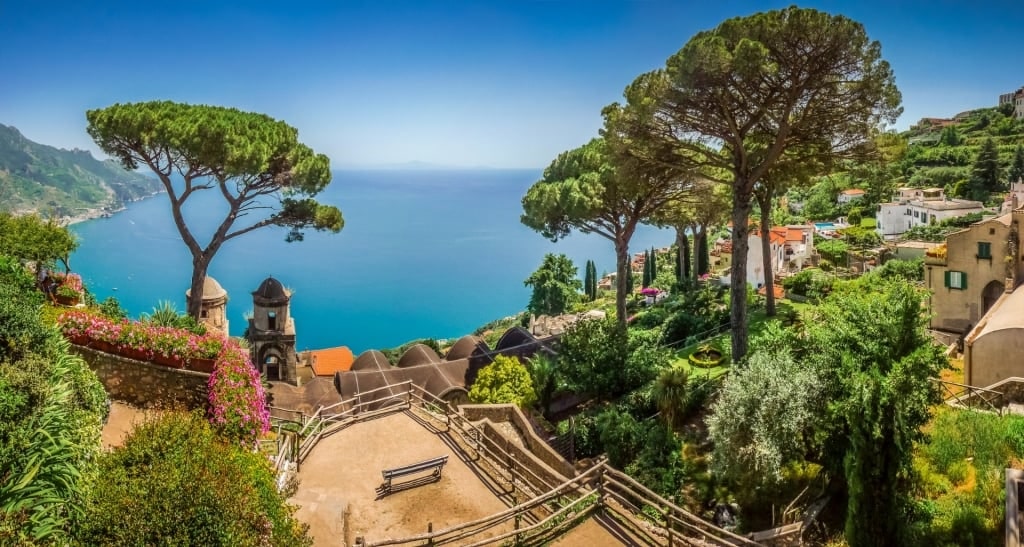
Villa Rufolo, Ravello
Another haughty highlight includes the 13-century Villa Rufolo, while the contrastingly modern Oscar Niemeyer Auditorium offers an al fresco summer musical performance rivaled only by Taormina’s Greek Theatre.
Vietri sul Mare
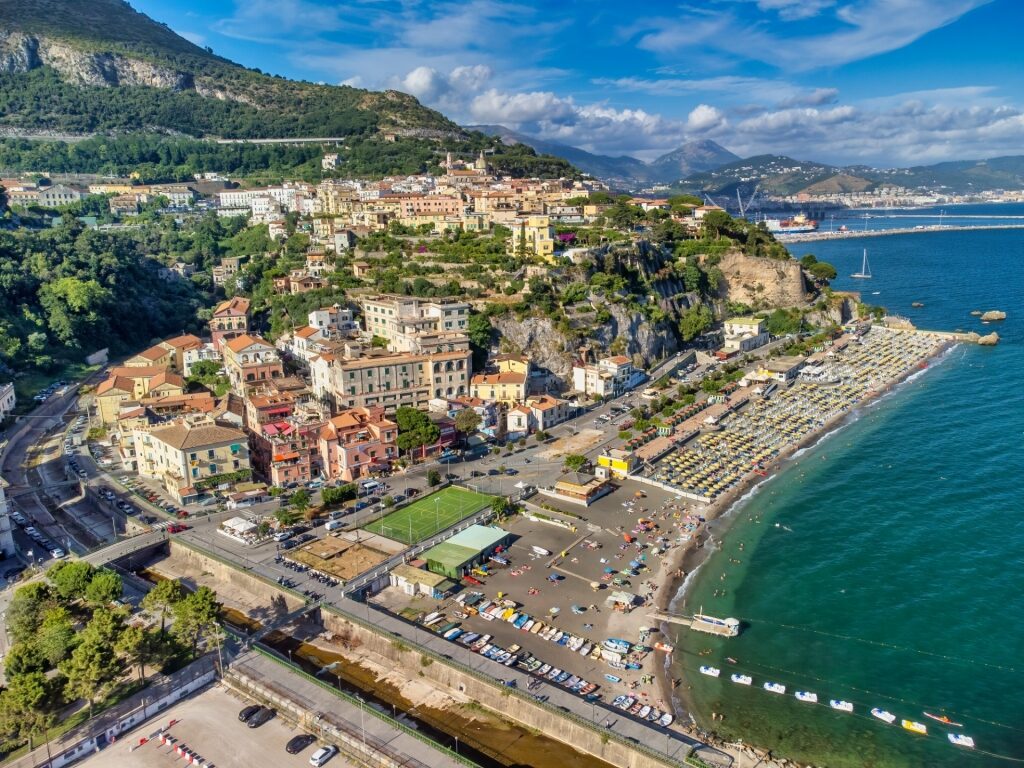
Vietri sul Mare
Leaving behind the busy port of Salerno and traveling west, you arrive at Vietri sul Mare, the gateway to the Amalfi Coast.
Despite being one of the most engaging of the Amalfi Coast’s towns, Vietri sul Mare is better known not for its incredible beaches and gorgeous architecture but rather for its ceramics.
This reputation, established since medieval times, is broadcast as you approach on the coastal road by the tile-clad dome of the 18th-century Duomo di San Giovani Battista.
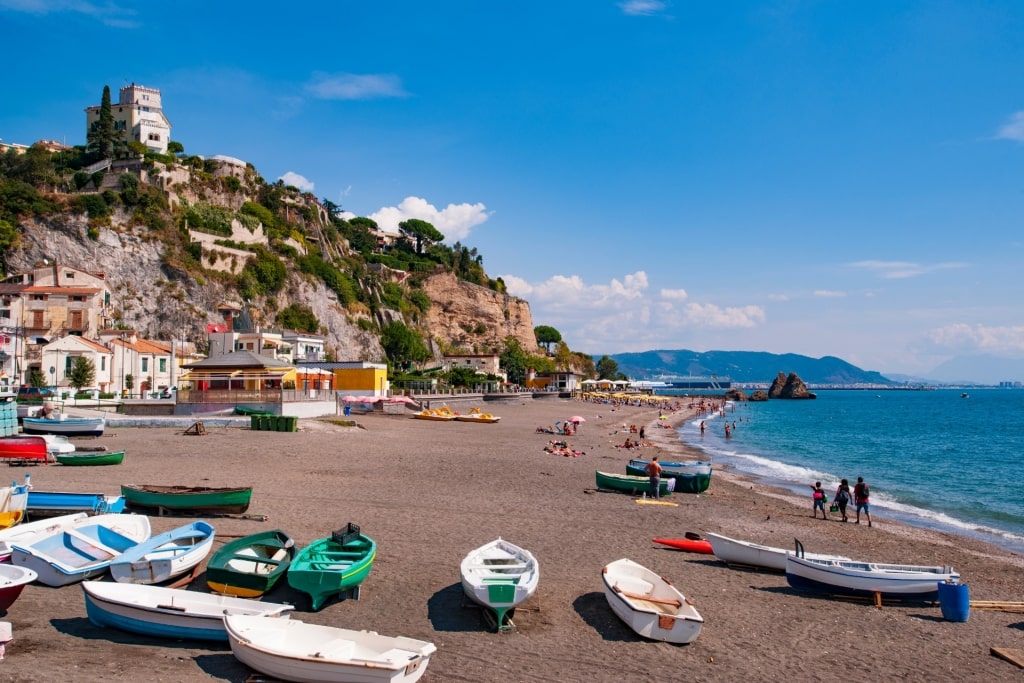
Vietri sul Mare
The town itself is lovely, the aspect calmer than some of the other more high-profile Amalfi locations allowing Vietri sul Mare’s pastel buildings more space to breathe.
Wandering the maze of whitewashed vicoli (lanes) is one of the best things to do on the Amalfi Coast. You’ll see the town’s prodigious output of colorful ceramics sold at shopfronts almost as decorative as the products on sale.
Larger than many of the other Amalfi towns, Vietri sul Mare also comes with proportionately more beachfront acreage. One option is La Baia, which offers 1,000 feet of seductively yellow sands.
Or unroll your towel at La Crespella, which includes visual points of interest such as the “Due Fratelli” (two brothers), towering sea stacks seen as Vietri sul Mare’s answer to Capri’s famed Faraglioni.
Atrani
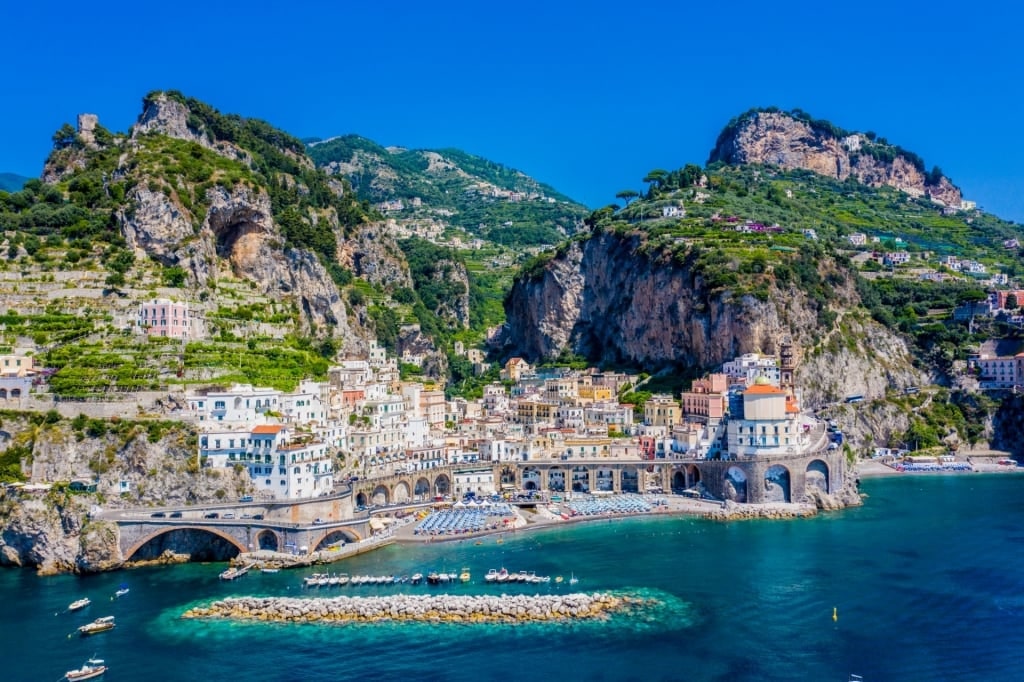
Atrani
Next door to Amalfi is the unprepossessing fishing village of Atrani. With only around 1,000 permanent residents, it’s one of the smaller destinations among the Amalfi Coast towns.
Nevertheless, you may recognize Atrani from pictures, since it’s often lauded as one of Italy’s most handsome coastal towns.
Its wedge-shaped beach sits at the bottom of a typical Amalfi cascade of architectural color, the buildings cinched at the waist by the coastal highway whipping around the village on a sequence of tall-stepping archways.
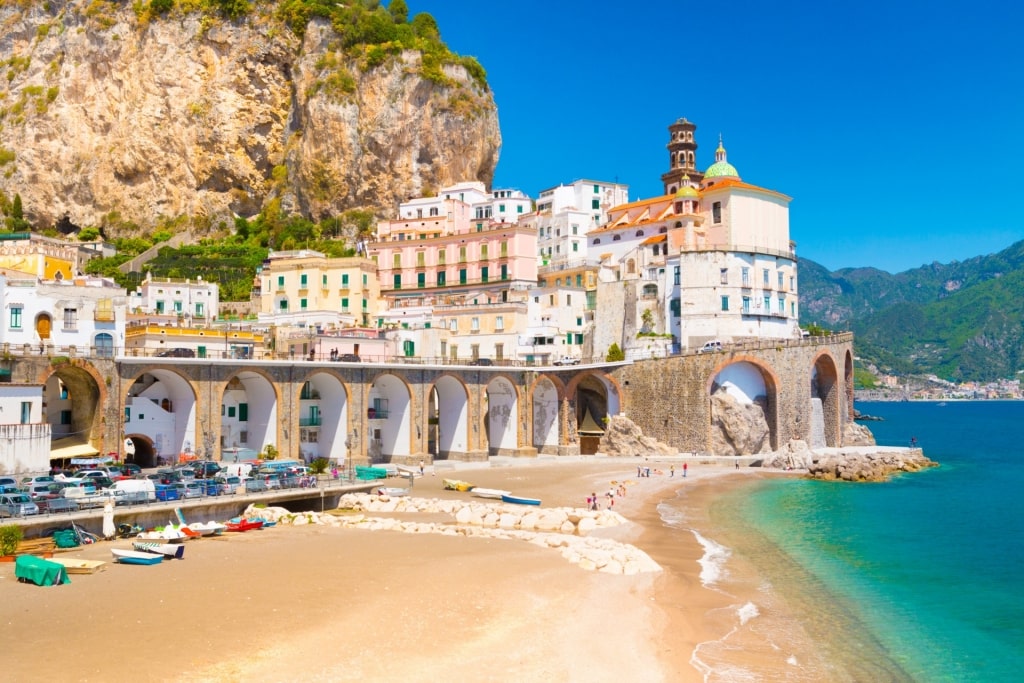
Atrani
One glance and it’s obvious why Atrani was a favorite with Dutch artist M.C Escher. The town is also renowned for its laid-back style. On tranquil summer evenings, you’ll discover a sense of serenity and authenticity among the cafés in its main piazza, or while sitting on the boulders dotting the seafront.
The beach is relatively uncrowded when compared to other Amalfi Coast towns in summer, with soft dark sand underfoot leading into clear, emerald shallows. Visitors are also drawn to Atrani’s 11th-century Santa Maria Maddalena, the coast’s only rococo-style church.
With parking at a premium, Atrani can also be visited on foot from Amalfi. Follow the level Via delle Signore path along the coast for half an hour and you’ll arrive. If you’re feeling energetic, ascend the hillside to the Santuario Santa Maria del Bando for a bird’s eye view of Atrani’s pastel jumble.
Cetara
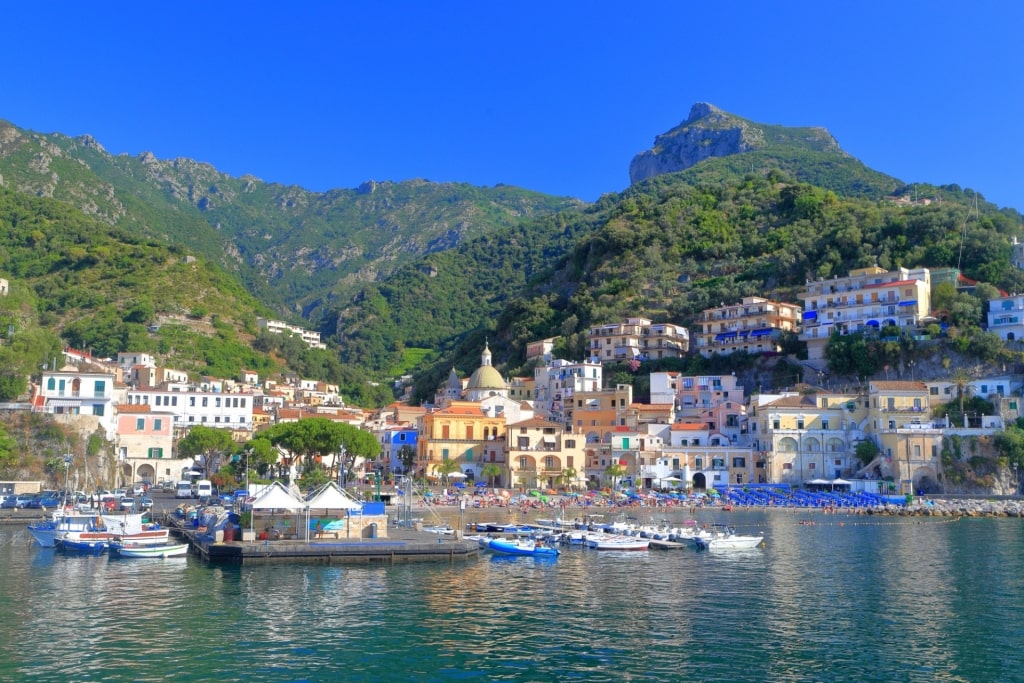
Cetara
Cetara lacks the thrusting glamor of some of the other Amalfi Coast towns. It offers instead an unaffected slice of life that’s a memento of existence in this region prior to Positano becoming a byword for Italian summertime glamor.
Emblematic of this is the fishing village’s chief export, the umami-rich, anchovy-based condiment “colatura”, described as “liquid gold” by the locals.
Try it in one of the traditional sidestreet trattorias. It’s best appreciated in spaghetti con colatura di alici where it takes center stage alongside chili, parsley, and garlic.
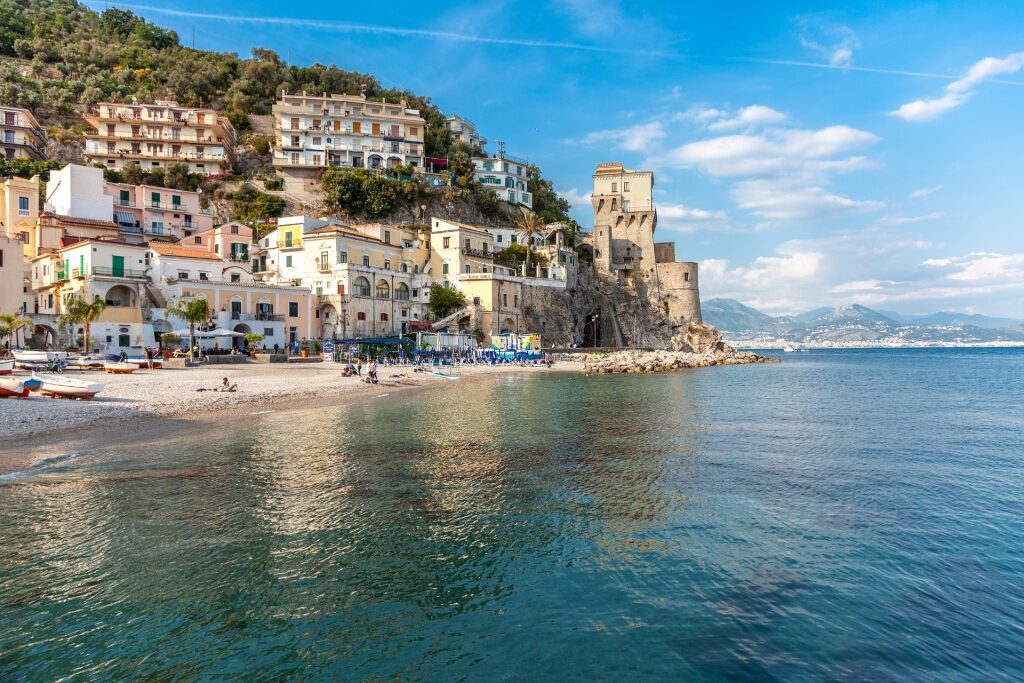
Cetara
Afterward, soak up the village’s easygoing vibe. Make your way to the striking Aragonese watch tower, now a site of rotating art exhibitions since the threat from Saracen pirates has waned of late.
Or head to the beach—little Lannio, located at the end of a lengthy flight of stairs, is the sandy pick of the bunch.
Furore
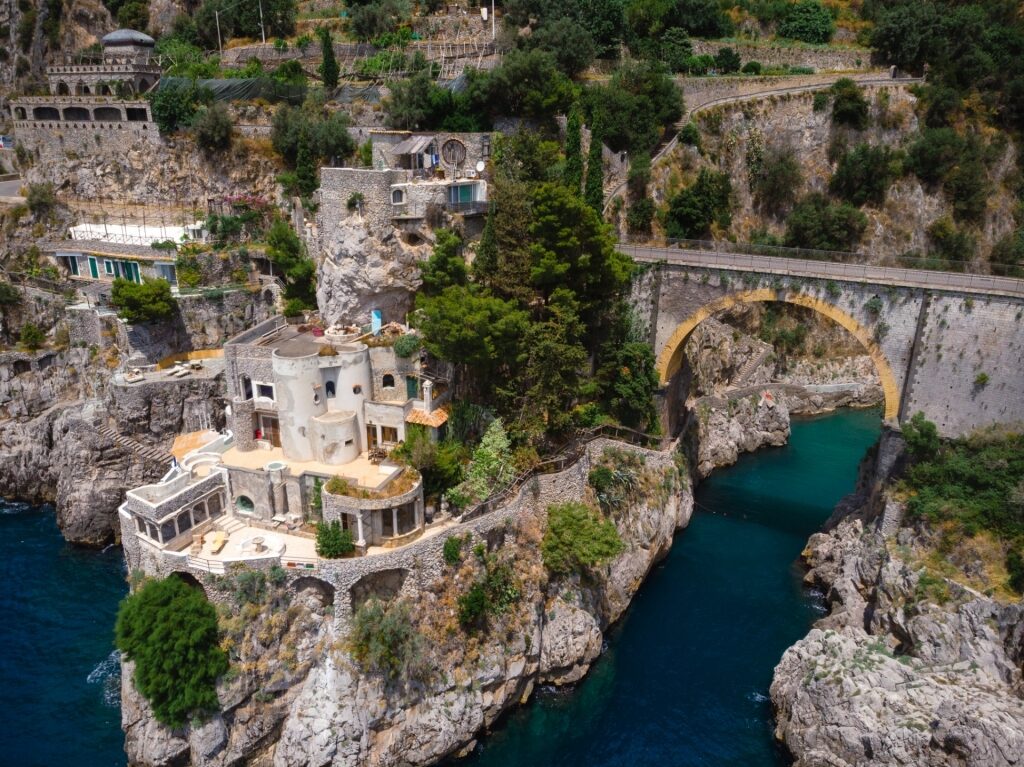
Furore
Challenging Positano as the region’s most perfect synthesis of landscape and architecture, Furore is a hamlet based in the Amalfi’s only fjord, which is also one of the best natural wonders in Italy.
Its collection of pale and pink-hued fishing cottages (or “moazzeni”) are encrusted like barnacles to the sides of the fjord.
Wander the 200 steps down from the shrub-tufted cliffs and make your way past the line of colorful fishing boats to where the water sizzles through the pebbles. Visit in the morning, as by the afternoon the beach is in shade.
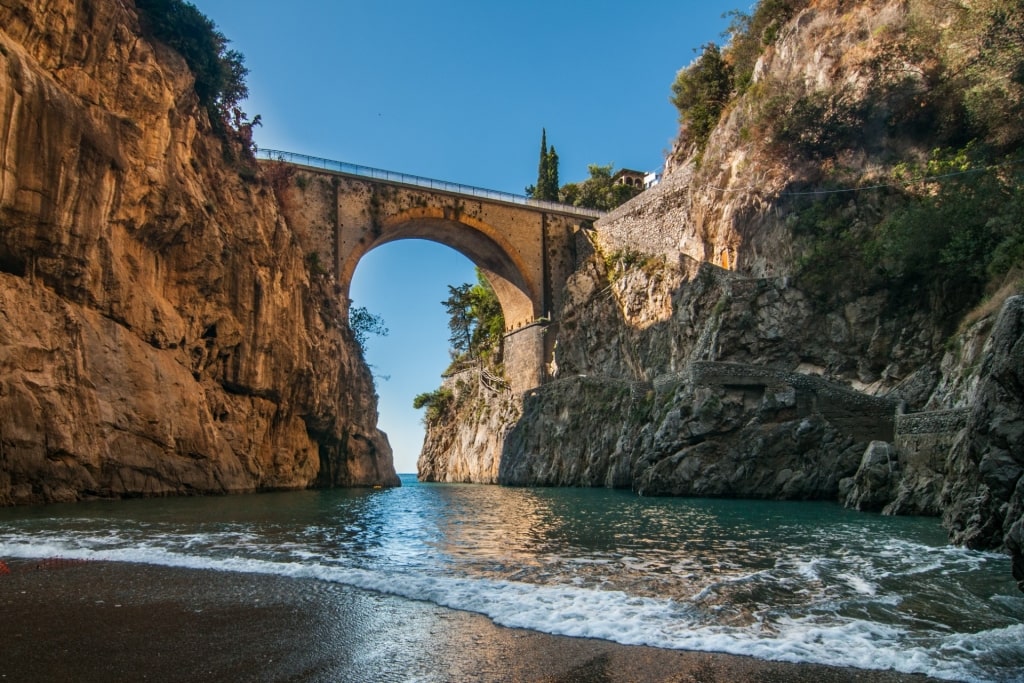
Furore
While it’s peaceful when the sun shines, its name suggests how these lapping waves, channeled down the narrow fjord, can crescendo to a tumult.
Praiano
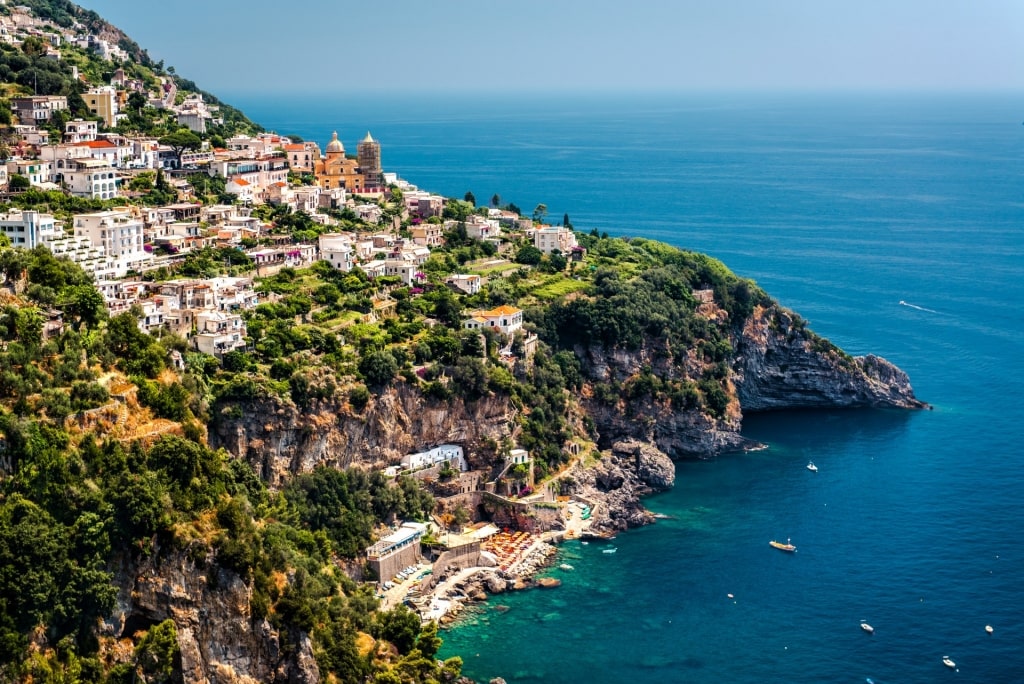
Praiano
A romantic outpost among the Amalfi Coast’s towns, Praiano offers some of the peninsula’s most spectacular vistas. During the medieval glory days of the Amalfi Republic, this fishing village was the preferred summer residence of the doge of Amalfi.
Situated between Positano and Conca dei Marini, Praiano’s Cala della Gavitella beach gazes toward Capri, Positano Bay, and a variety of horizon-adorning islets.
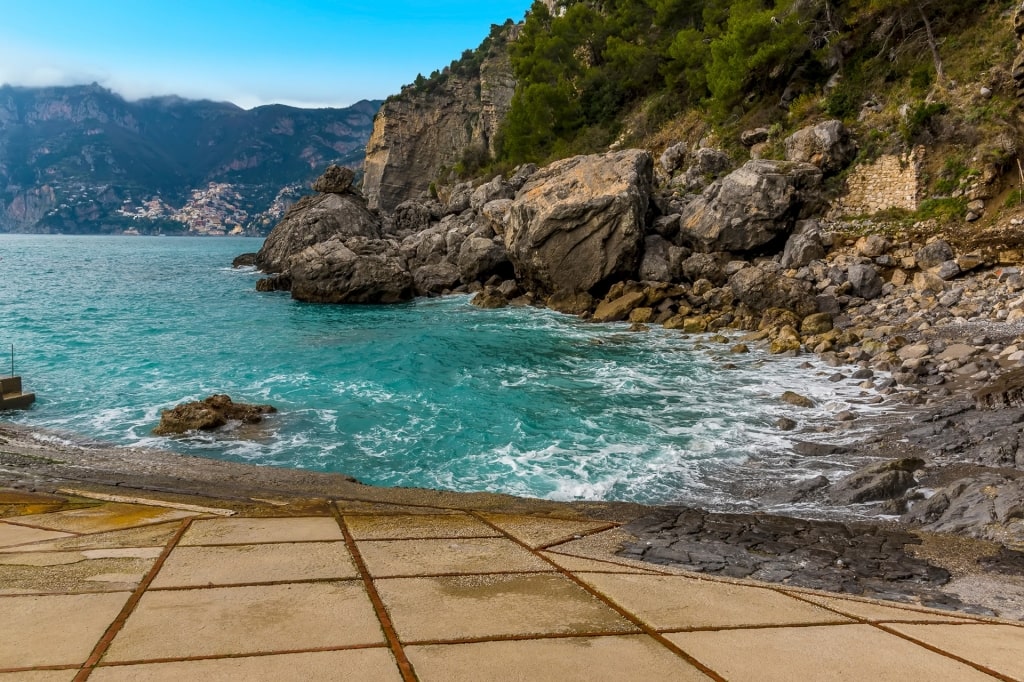
Praiano
Bathed in sunshine from morning to dusk, this Italian beach is a well-loved spot and the center of Praianesi life. Watch the sunset beachside at the superb Gavitella restaurant while dipping into a dish of red prawns on a bed of the local paccheri pasta.
Away from the coastal pulchritude, compact Praiano reveals itself as another inspired architectural jumble in the typical Amalfi style. Setting this town apart, however, are its many votive shrines.
With religious figures depicted in glossy majolica tile, these shrines were displays of wealth and property by Praianese families, as well as bids for divine goodwill—as if living on the Amalfi Coast were not blessing enough.
Read: Cinque Terre vs. Amalfi Coast
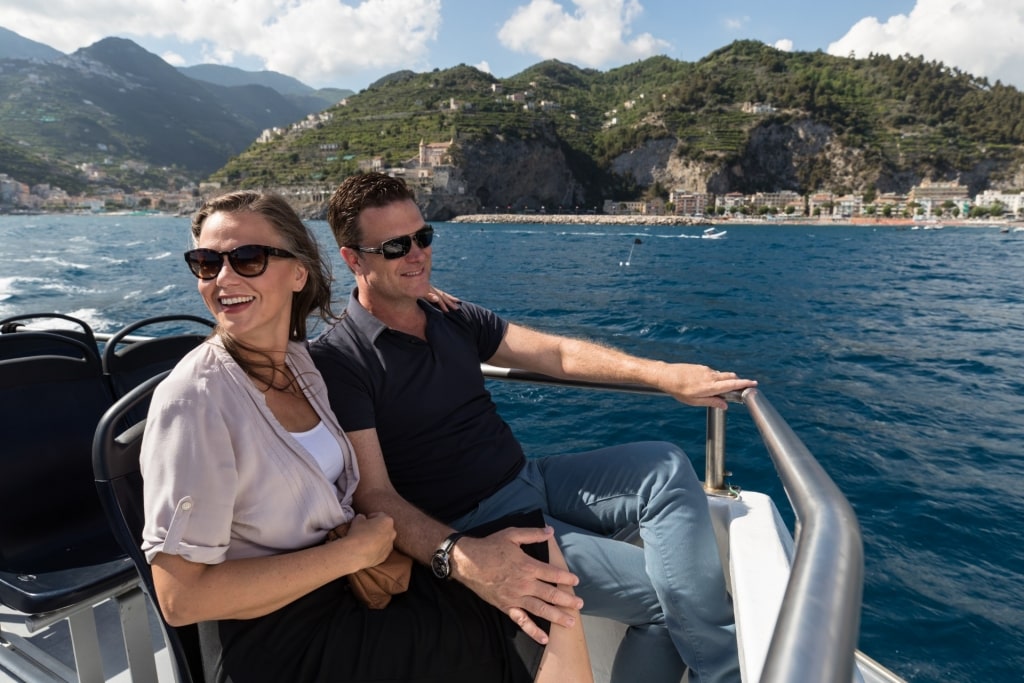
Amalfi
Discover what divine goodwill really looks like with a visit to the Amalfi Coast’s towns on a cruise to Italy and explore its exquisite beaches, billowing bougainvillea, and life-changing cuisine. Browse Celebrity’s cruises to the Amalfi Coast and book an unforgettable vacation to a famously romantic destination.
